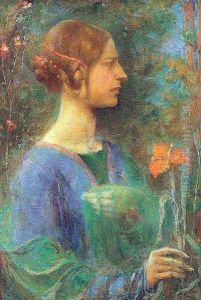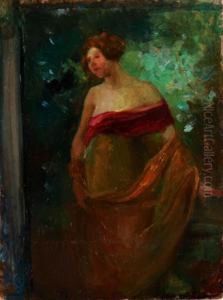Clara Weaver Parrish Paintings
Clara Weaver Parrish was an American artist and designer who was born on March 16, 1861, in Selma, Alabama. She was part of a generation of women who gained recognition in the arts during the late 19th and early 20th centuries. Parrish was known for her work in a variety of mediums, including painting, stained glass, and illustration.
In her early years, Parrish's artistic talent became evident, and she pursued her education in art despite the societal expectations for women at the time. She studied at several institutions, including the Art Students League in New York and the Académie Julian in Paris. Her time in Paris exposed her to the Art Nouveau movement, which would greatly influence her style. She was also inspired by the Impressionists and Post-Impressionists, adopting some of their techniques and color palettes into her own work.
Parrish's paintings often featured floral motifs, landscapes, and figures, reflecting her interest in nature and the human form. She was particularly adept at watercolor and was recognized for her delicate and refined approach to this medium. In addition to her paintings, Parrish became well-known for her stained glass designs. She worked with the prestigious Tiffany Studios, where she created windows that often depicted religious scenes or allegorical figures.
Throughout her career, Clara Weaver Parrish was active in the art community, particularly in support of other women artists. She was a member of the National Association of Women Painters and Sculptors and the Plastic Club, a women's art organization in Philadelphia. Her work was exhibited in various prestigious venues, including the Paris Salon, the Pennsylvania Academy of the Fine Arts, and the National Academy of Design.
Parrish's contributions to art and design continued until her death on December 18, 1925. Her legacy is preserved through her diverse body of work, which remains an important part of American art history, especially in the context of women's contributions to the field during a transformative era.

